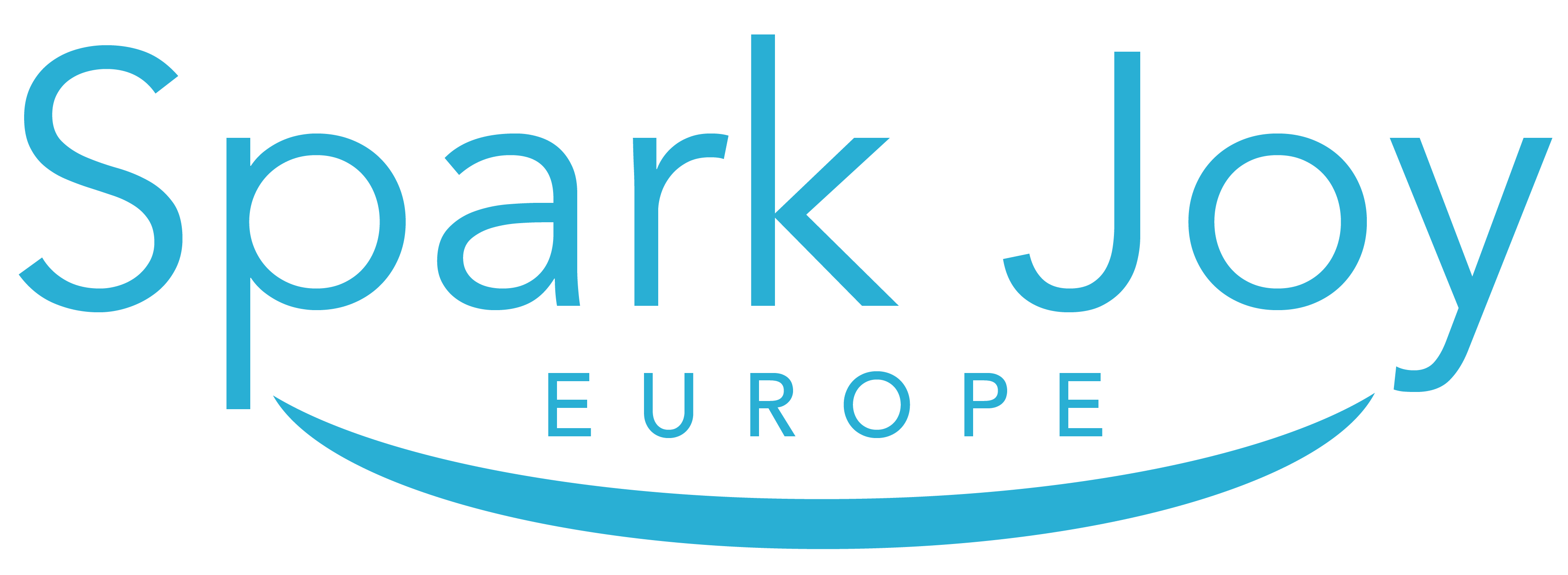10 Terrific Teacher Tidy Tips: From classroom chaos to daily bliss
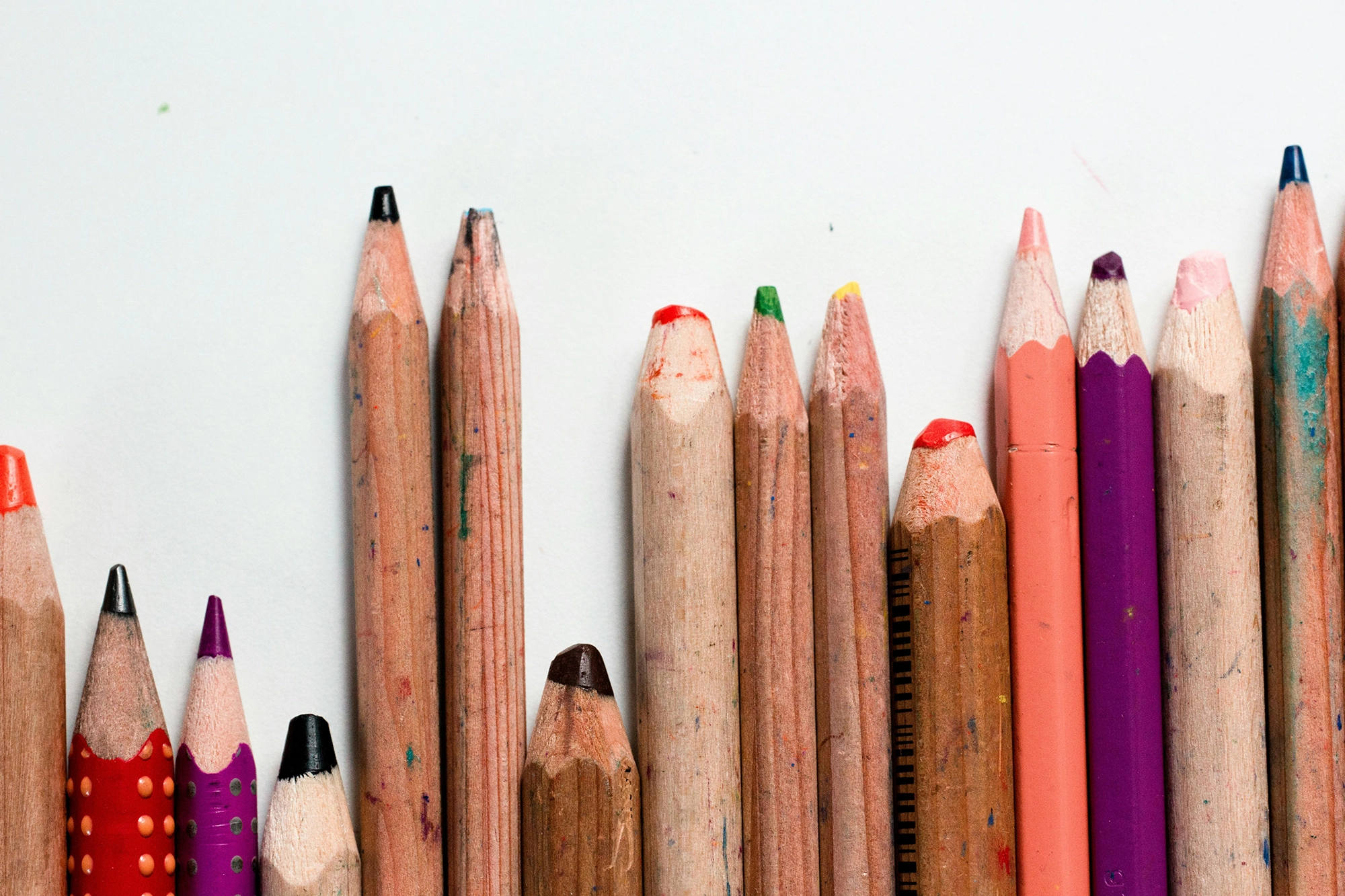
From Classroom Chaos to Daily Bliss
The day I stepped into a 3rd-grade classroom for my first KonMari project, I heard my dad’s old nickname for school: “the brain factory.” Fitting, right? Instead of conveyor belts you’ve got desks, instead of machinery you’ve got whiteboards and smartboards—and instead of spare parts you’ve got rogue crayons and runaway paperclips.
When the “factory” gets cluttered, efficiency plummets. The KonMari Method gives you a simple, humane blueprint: keep what supports learning and joy, thank and release the rest. These classroom decluttering tips are designed for real-life teachers who want a sustainably organized classroom.
Why Decluttering Your Classroom Before School Starts Matters
An organized classroom doesn’t just look nice — it sets the tone for focus, calm, and easier classroom management. Overstuffed cupboards, crowded shelves, and cluttered flat surfaces can leave you scrambling for supplies, wasting valuable teaching minutes, and feeling mentally drained. Whether you’re a new teacher or a veteran educator, these teacher decluttering tips will help you create a classroom that works for you instead of against you.
1. Be the Student – Learn the KonMari Method
Before you dive in, become a student yourself. Familiarize yourself with the KonMari Method. At its core, it’s about keeping only what sparks joy and letting go of the rest. For teachers, this might mean holding onto that one trusty stapler but finally saying goodbye to those dusty overhead projector sheets. Borrow The Life-Changing Magic of Tidying Up from the library and learn the six KonMari tidying principles — they work just as well in a classroom as they do at home.
2. Find the Right Helper
Recruit a non-judgmental aide, colleague, or small student crew. Pick someone who won’t get sentimental about every poster—and who isn’t allergic to dust.
3. Budget the Time
Organizing your classroom isn’t something you can squeeze into a 15-minute break between lessons. Set aside dedicated time for this mission – think a weekend or a couple of long afternoons with no expected distractions.
Schedule your tidy sessions like you would an important meeting or a much-needed massage, because your future self (and your students) will thank you. Plus, knowing there’s a finish line will help keep you motivated when you’re knee-deep in a pile of laminated posters.
If you’re splitting it up, work by sub-category so you can finish what you start without leaving chaos mid-room.
4. Go All In (by Category)
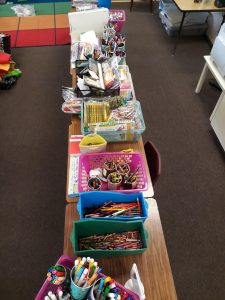
Writing instruments – ready for joy check!
When you’re ready to tackle the clutter, don’t tiptoe around it – dive in! Be brutal, empty shelves, clear out drawers, and pull out all those materials lurking in dark corners that belong to the category you are working on. Seeing everything laid out at once might be overwhelming (and a little horrifying), but it’s the only way to truly assess what you’re dealing with.
Discard broken/outdated items first; these items don’t serve anybody and when they are gone they free up space to work. Toss the pens with no ink ASAP!
6. Discard First!
Before you store anything, get discards out of the room. Otherwise, piles will distract you and block your ability to see ideal storage solutions.
Discard First is one of the six KonMari principles; it is highlighted here because most every client I’ve worked with wants to put things away before discards are removed from the space. It is a strong, natural tendency to want to jump ahead to start storing things. The consequence of doing that is that the piles of discards are distracting and diminish your ability to visualize ideal storage solutions.
Classrooms tend to evolve overtime, and when a new item comes into a classroom. It gets stuck in the corner, you know, that it can fit in at that moment. But when you’re doing the KonMari tidy, you have an opportunity to place everything in an ideal location. Getting discards out of the room frees up new and better locations for storing things.
7. Reach Out to the Rest of the School to Re-purpose Your Discards
One teacher’s trash is another teacher’s treasure. Before you send excess supplies or books to recycling, see if anyone else in your school could use them. Reach out to your colleagues to see who is interested in your discards, take photos and send them around or set up a “free to a good classroom” table. Adding a “pick-up” deadline to your give-away offers ensures your discards won’t pile up and derail your decluttering process.
Remember, it’s easier to organize a smaller collection of things that you truly need and love than to try to cram everything into an already overcrowded space.
Ready for a Calm, Clutter-Smart Classroom?
I help teachers apply KonMari principles to create functional, joyful learning spaces.
8. 70% is Full
Overcrowded shelves create stress. Aim for storage spaces to be no more than 70% full, leaving breathing room for new materials and making it easier to take things in and out.
9. Flat Surfaces Are Workspaces, Not Storage Areas
Repeat after me: flat surfaces are for working, not storing. Your desk is not the place for random papers, and your tables shouldn’t be buried under craft supplies.
Respect the flat spaces and leave them as empty as possible. A couple of items of decor or tools that you know you need on hand, like a holder for pens or pencils, are fine but otherwise honor that flat space and keep it empty. When those spaces are clear they’re ready for their intended use – whether it’s teaching, grading, or having a place to set your coffee cup. If you can see the surface, you’re winning.
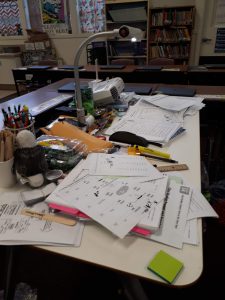
Teacher’s desk Before
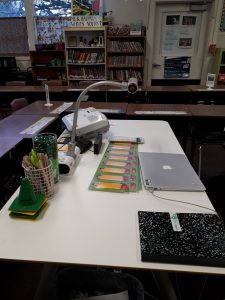
Teachers Desk After
10. Label, Label, Label
Play fast and loose with the label maker – box, bin, drawer or shelf – it gets a label!
You’ve reevaluated your classroom, the items in it spark joy and you’ve put things away in the most convenient places for you. Now you want to label. Whether it’s a substitute teacher, student or an aide, labeling is going to help everyone who operates in your classroom find what they seek.
Having clear labels not only helps you locate things quickly but also makes it easier for students to put things back where they belong (in theory, anyway). And labeled containers can feel incredibly satisfying – adding a touch of serenity to your day.
Ready to Transform Your Classroom?
With these classroom decluttering tips, you can go from surviving in a messy “brain factory” to thriving in a space where teaching feels effortless and organized.
I offer virtual workshops that fit perfectly into a professional development day, so your entire school can learn how to Spark Joy together. These sessions give teachers practical tools for creating and maintaining a clutter-free, supportive learning environment — no matter the grade or subject.
If you’re curious, book a free 45-minute consultation. It’s simply a chance for us to discuss your specific needs, answer your questions, and explore whether a classroom tidy workshop would be the right fit for your school.
I’m Sheila, your opruimcoach/professional organizer. Each month I’ll drop fresh organizing inspiration, smart tips, and a nudge to let go of what doesn’t serve you. Sign up now and get organizing inspiration without adding to your clutter pile!
